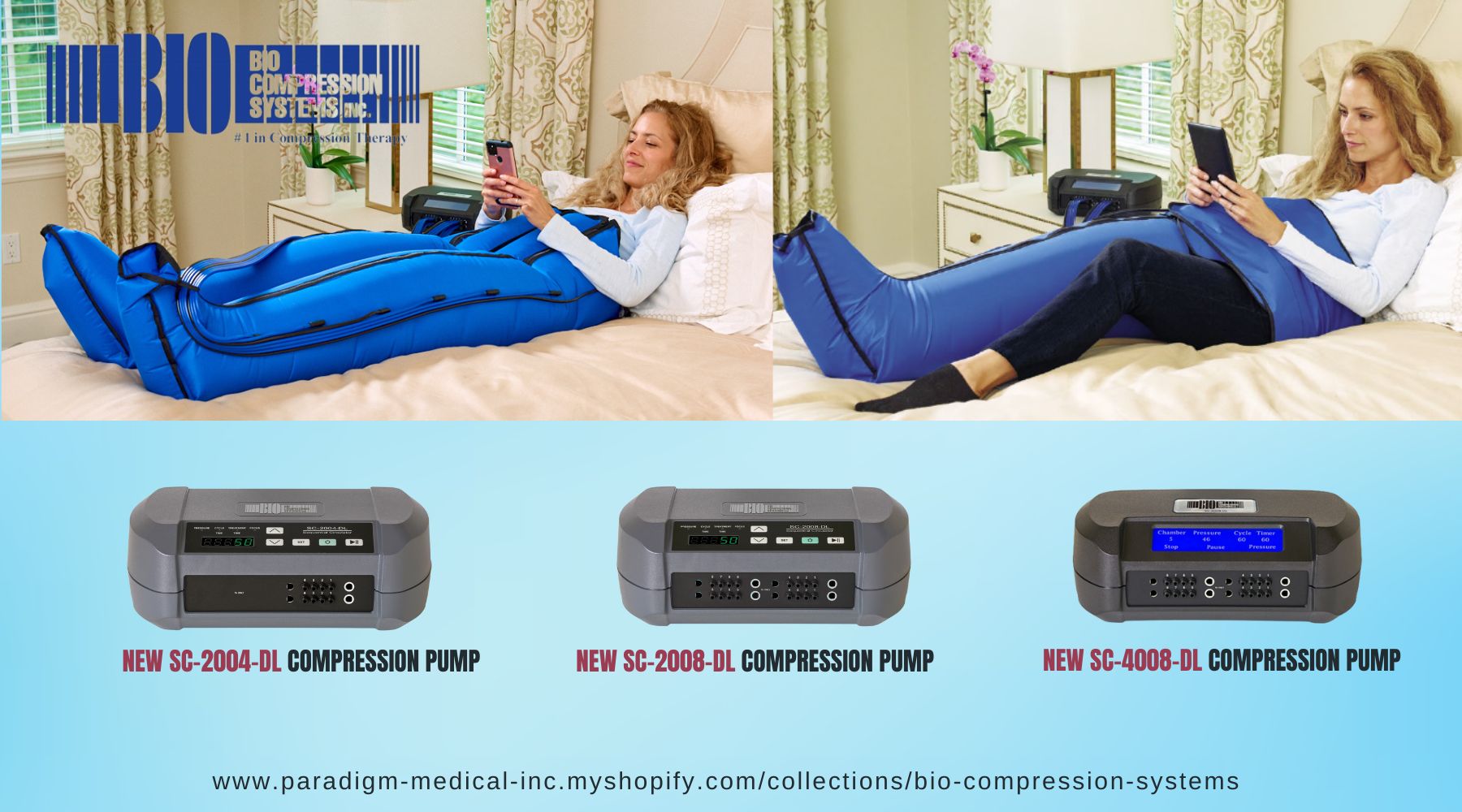How Intermittent Pneumatic Compression Pumps function to treat Lymphedema, Lipedema, Venous Insufficiency, and DVT
Intermittent Pneumatic Compression (IPC) devices or Sequential Compression Devices (SCDs), have significant clinical application primarily in preventing and treating conditions related to poor circulation.
Primary Clinical Applications
The main clinical indications for pneumatic compression pumps are:
- Lymphedema
- Chronic Venous Insufficiency (or Venous Ulcers)
- Deep Vein Thrombosis (DVT) Prophylaxis
Lymphedema Treatment
- Case: Patients suffering from lymphedema (chronic swelling due to impaired lymphatic drainage), often a result of cancer treatment (lymph node removal/radiation) or a congenital condition.
- Mechanism: Multi-chamber, sequential pumps are typically used. They apply pressure from the distal (far) part of the limb toward the proximal (near) part, effectively "milking" the excess lymph fluid out of the affected limb and into areas where lymphatic drainage is preserved.
- Use: IPC is usually an adjunct to conservative measures like complete decongestive therapy (CDT), which includes manual lymphatic drainage and compression garments. Advanced pumps are sometimes designed to mimic manual lymphatic drainage techniques.
~~~~~~~~~~~~~~~~~~~~~~~~~~~~~~~~~~~~~~~~~~~~~~~~~~~~~~~~~
Chronic Venous Insufficiency and Venous Ulcers
- Case: Patients with CVI have damaged vein valves, leading to blood pooling, high pressure in the veins, and symptoms like chronic edema (swelling), skin changes (stasis dermatitis, hyperpigmentation), and ultimately venous stasis ulcers.
- Use: Compression pumps can supplement standard continuous compression therapy (like bandages or stockings) and leg elevation to reduce edema and promote the healing of refractory (hard-to-heal) venous ulcers.
~~~~~~~~~~~~~~~~~~~~~~~~~~~~~~~~~~~~~~~~~~~~~~~~~~~~~~~~~
Deep Vein Thrombosis (DVT) Prophylaxis
This is the most common use in a hospital setting.
- Case: Patients who are immobile due to surgery (orthopedic, neurological, general), illness, or trauma are at high risk of developing a DVT (blood clot in a deep vein, usually in the legs). If the clot breaks off, it can travel to the lungs, causing a potentially fatal pulmonary embolism (PE).
- Mechanism: The devices use inflatable sleeves (cuffs) wrapped around the legs (or sometimes the arms) that cyclically inflate and deflate. This mechanical compression mimics the natural muscle pump action of walking, increasing venous blood flow velocity and reducing blood stasis, which are key factors in clot formation (part of Virchow's triad).
- Evidence: Studies and meta-analyses support the effectiveness of IPC in reducing the risk of venous thromboembolism (VTE - which includes DVT and PE) in hospitalized, high-risk patients. They are often used when pharmacological prophylaxis (blood thinners) is contraindicated or in combination with it for added benefit.
Intermittent Pneumatic Compression Devices for the treatment of the above conditions may be covered by private insurance. Check with your insurance provider!
*As a Class II Medical Device regulated by Health Canada, a prescription is required.
For more information on Pneumatic Intermittent Compression Pumps, contact us today, or view them online HERE.


